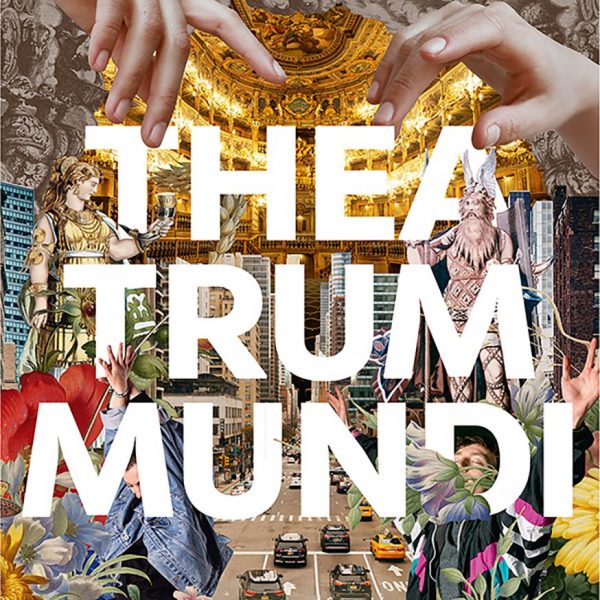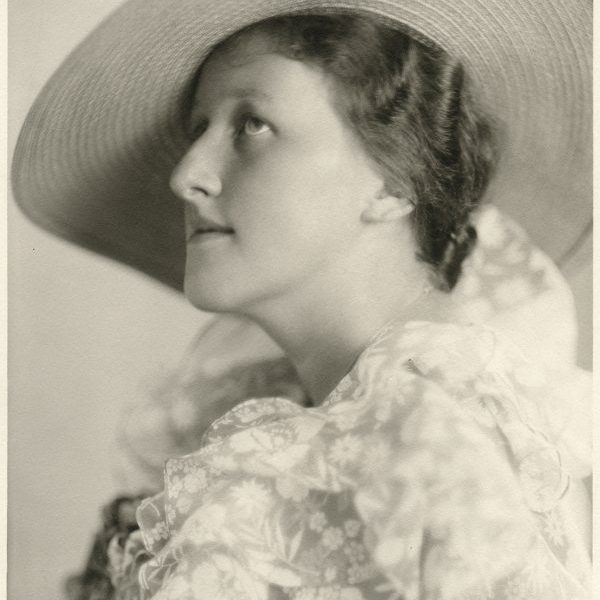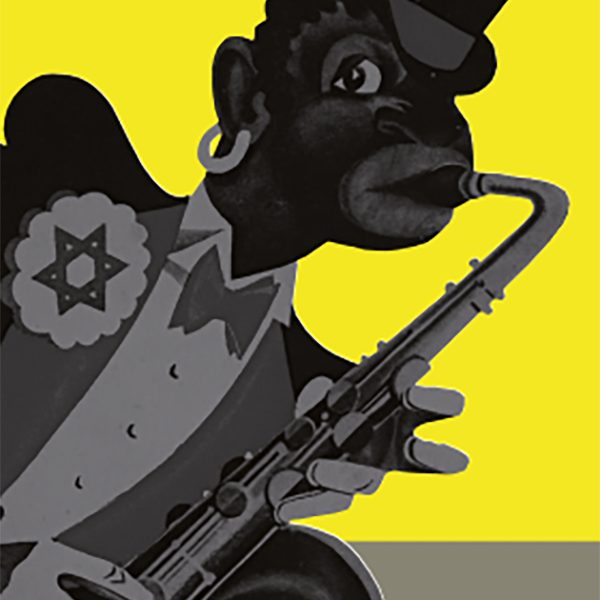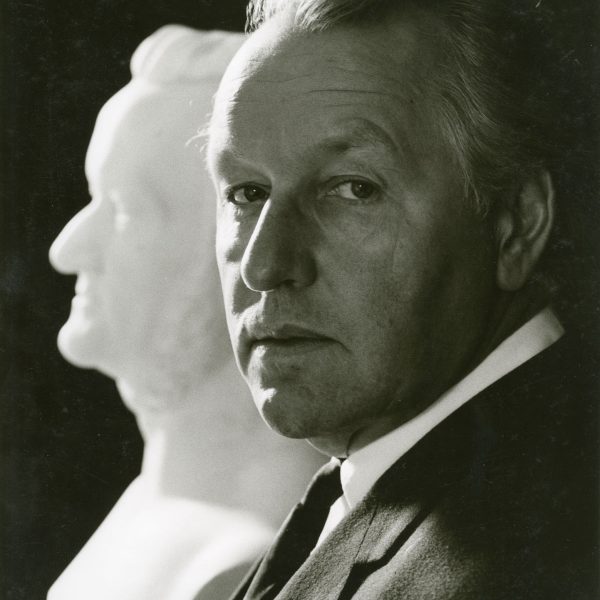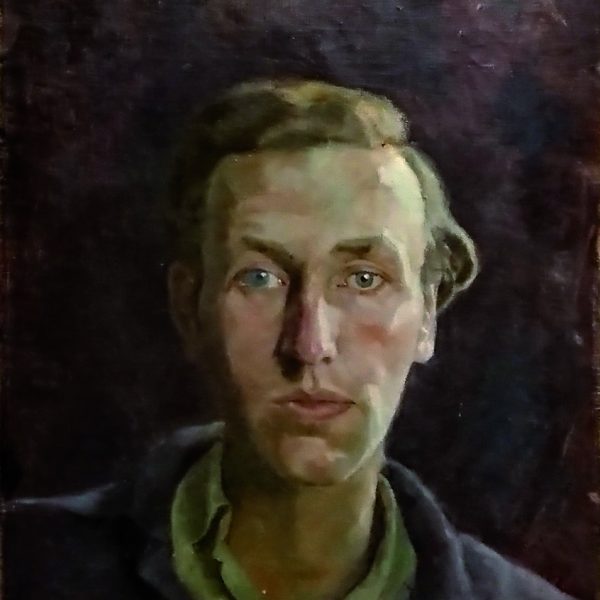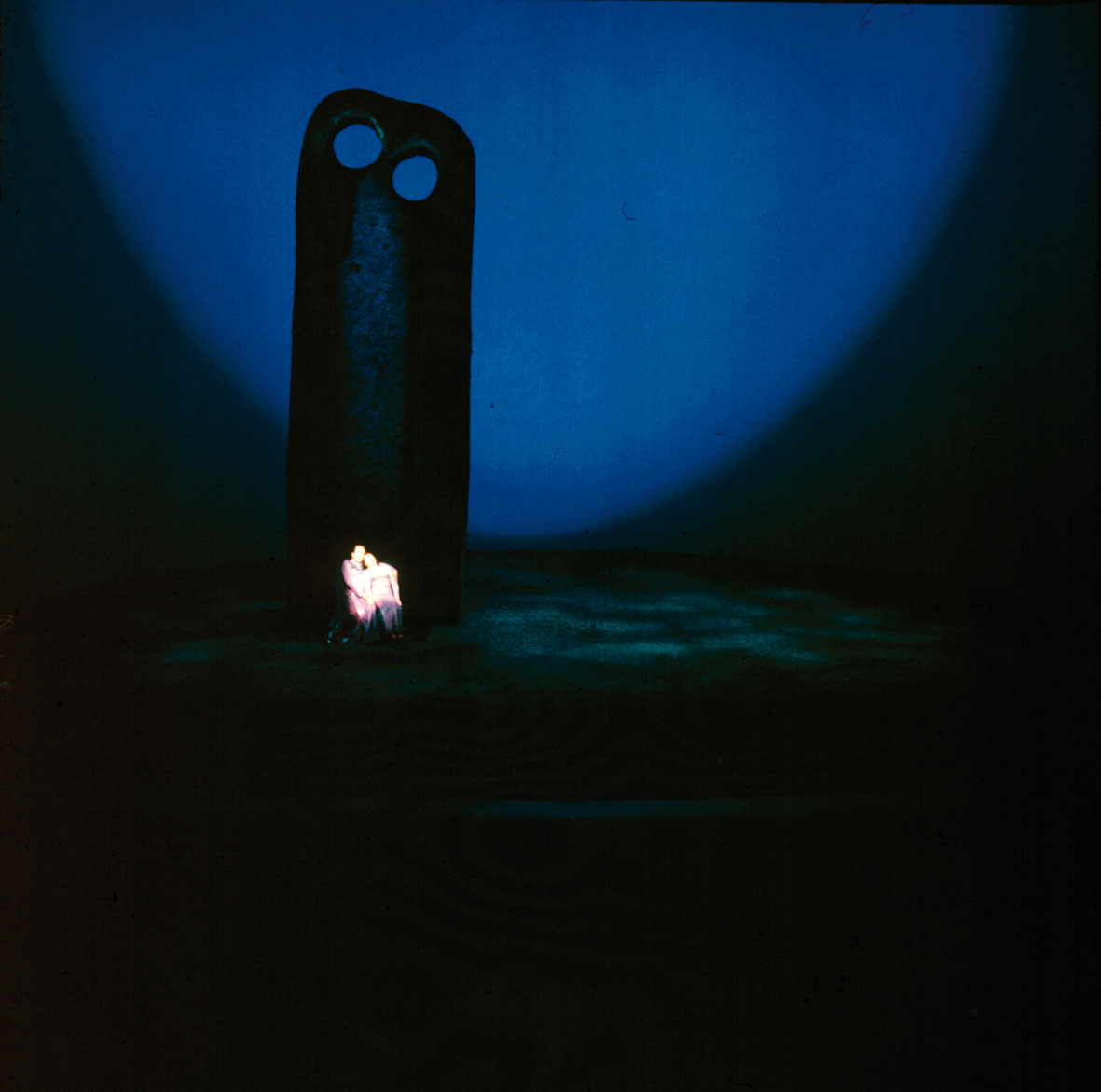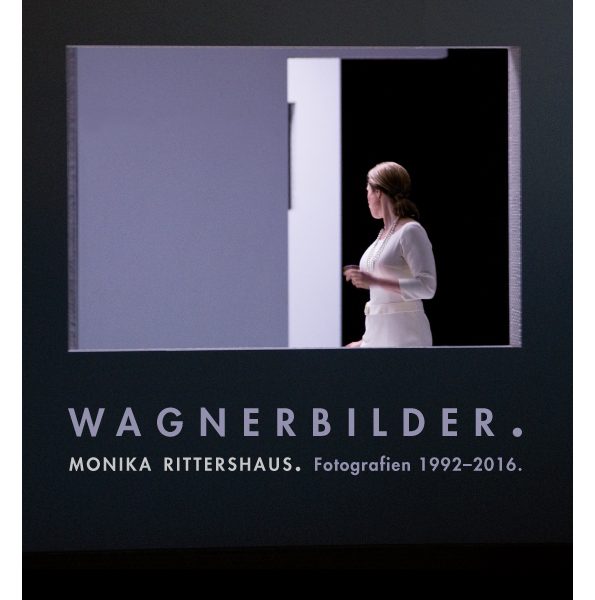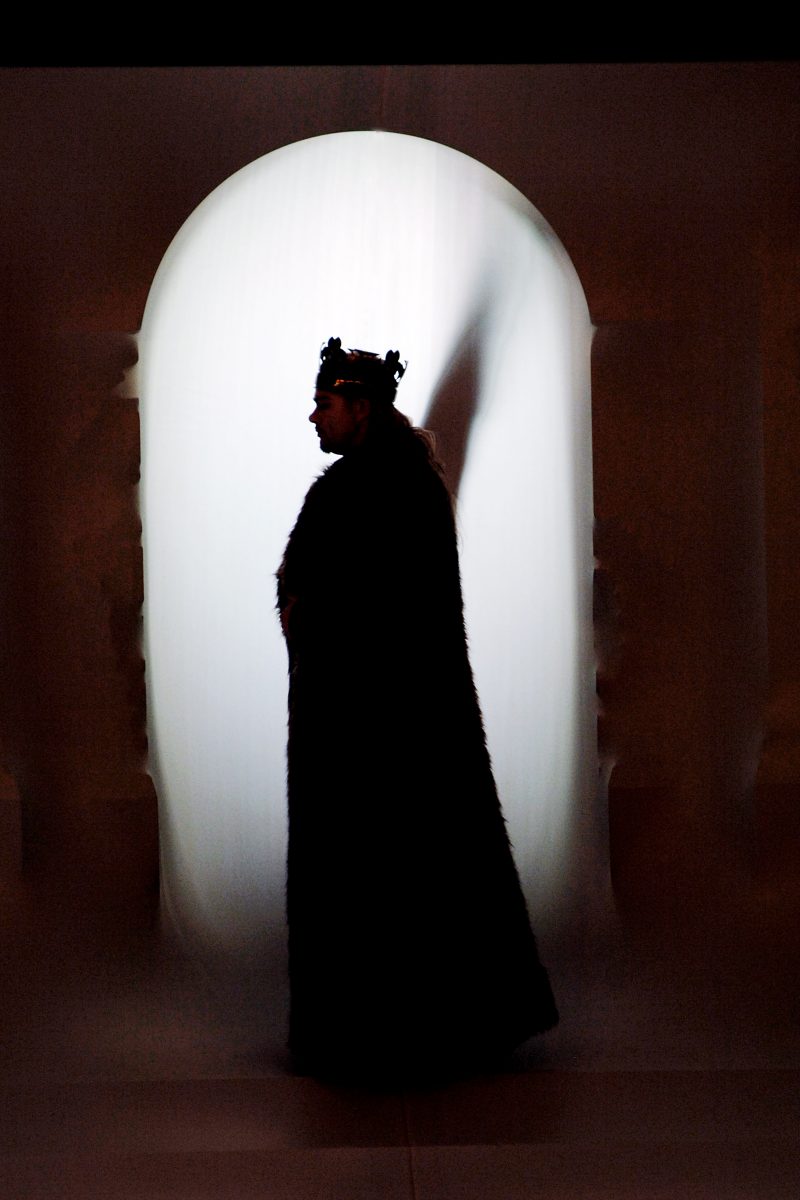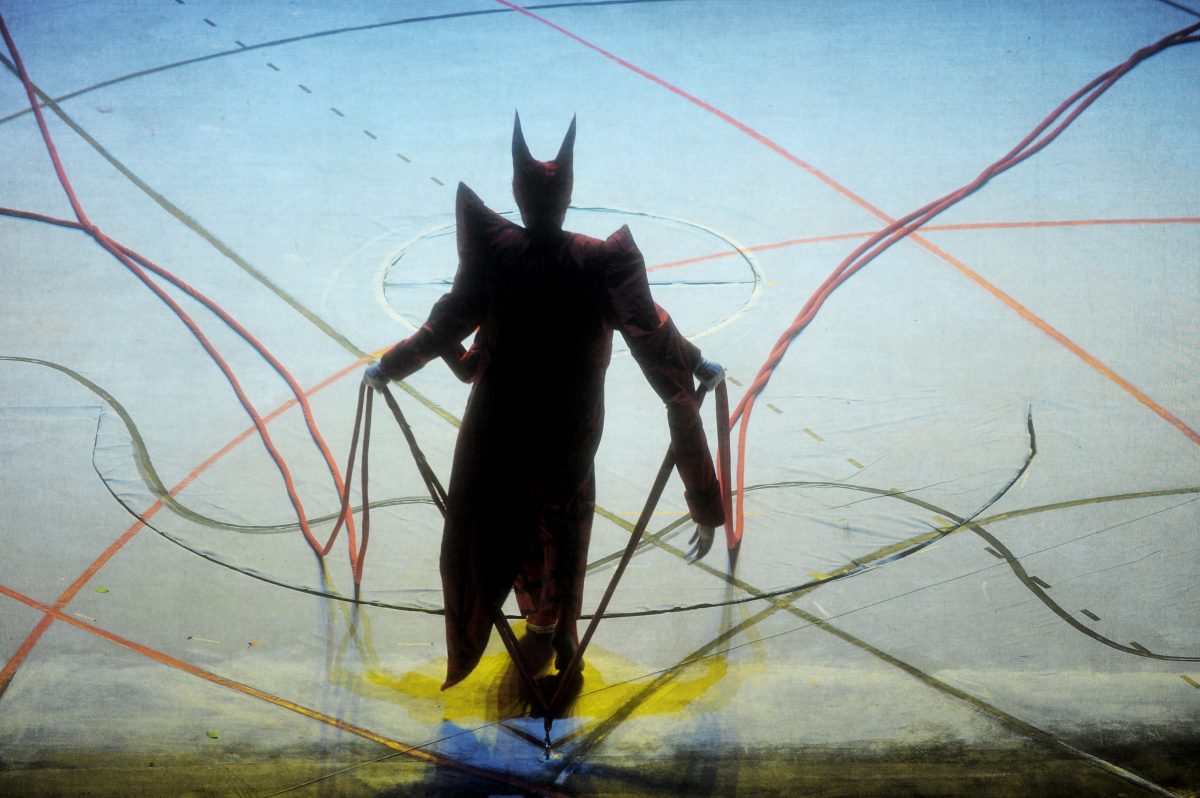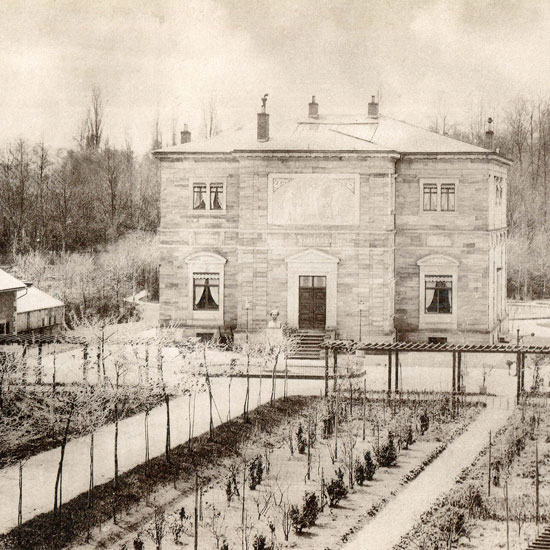19th July to 3rd November, 2019
The Principal. Wolfgang Wagner and the “Bayreuth Workshop”.
On 30th August, 2019, Wolfgang Wagner (1919-2010) would have been 100 years old. The youngest grandson of Richard Wagner, he directed the Bayreuth Festival for almost 60 years and shaped it like no other during this almost unimaginably long era. To mark the occasion of his 100th birthday, the Richard Wagner Museum is mounting a large anniversary exhibition, presenting and honouring his personality and outstanding life achievement as artistic director, stage designer and director.
The exhibition is also a panorama of German history as well as social and cultural developments far beyond German reunification, which the Festival and its treatment of Richard Wagner’s works has always reflected and sometimes even encapsulated.
In 1951, with the reopening of the Bayreuth Festival and together with his brother, Wieland, Wolfgang Wagner succeeded in dissociating the Festival from the compromising entanglement with National Socialism which the family itself had caused.
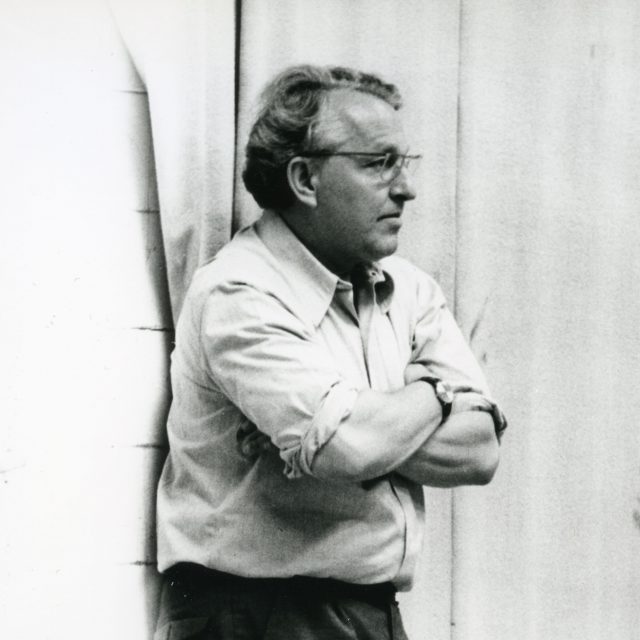
After the premature death of his brother in 1966, Wolfgang Wagner directed the Festival on his own until 2008, when he opened it to foreign directors, framed its workshop character and, with the groundbreaking engagements of directors such as Patrice Chéreau, Götz Friedrich, Harry Kupfer and Christoph Schlingensief, established it as a central venue for modern, innovative and mostly controversial interpretations of Richard Wagner’s works.
Through his support of scientific projects such as the Wagner Collected Letters or the Thyssen series on the Bayreuth Festival, and with the establishment of the Richard Wagner Foundation in 1973, he also promoted and secured the fostering and judicious treatment of Richard Wagner’s away from the stage and the Festival Hall.
In keeping with Wolfgang Wagner’s interpretation of the Festival as a “workshop”, the Richard Wagner Museum also sees this exhibition as the first of several “productions”: as the initial step on the path to understanding the person and the Festival director, making an initial assessment, at the start of the creation of a museum in which those things that endure over time gradually emerge. Due to the fact that his life and work are in the relatively recent past, the research on Wolfgang Wagner is still at too early a stage to permit a final evaluation.
4th April to 26th May, 2019
Siegfried Wagner. A search for clues
To mark the 150th anniversary of Siegfried Wagner’s birth, the museum sets out in search of traces of his son – Siegfried Wagner the artist, the Festival director and man.
Siegfried Wagner (1869-1930) was chosen by his mother Cosima as “heir to the throne” and guardian of his father’s inheritance. However, it would be inappropriate and incorrect to describe him solely as a “professional heir”.
When he took over the management of the Festival in 1908, he began the first tentative modern changes to the productions. Under Siegfried Wagner, light in particular became a design medium. In 1924 he succeeded in reopening the Festival, which had been interrupted by the outbreak of World War I. With his new production of “Tannhäuser” in 1930, Siegfried Wagner at last demonstrated that as a director he was open to a contemporary style of staging. He learned of the roaring success of his production in hospital, after having suffered a heart attack before the opening of the Festival. Siegfried Wagner died on 4th August, 1930.
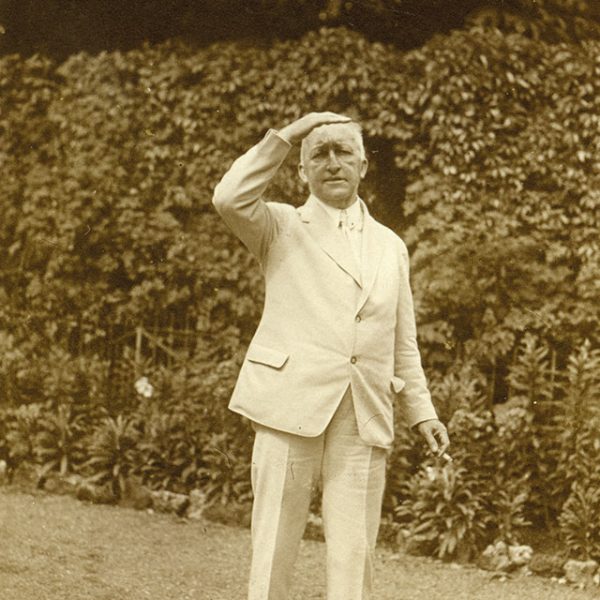
To mark the 150th anniversary of Siegfried Wagner’s birth, the Richard Wagner Museum Bayreuth opens the repositories in which his artistic legacy is preserved and sets off on the trail of the son, artist, Festival director and personage of Siegfried Wagner. The exhibition attempts to close the gaps that characterize the biography of Wagner’s heir and that to this day treat his personality, his artistry and therefore also his philosophy like a blank canvas onto which various interpretations and controversial discussions are projected.
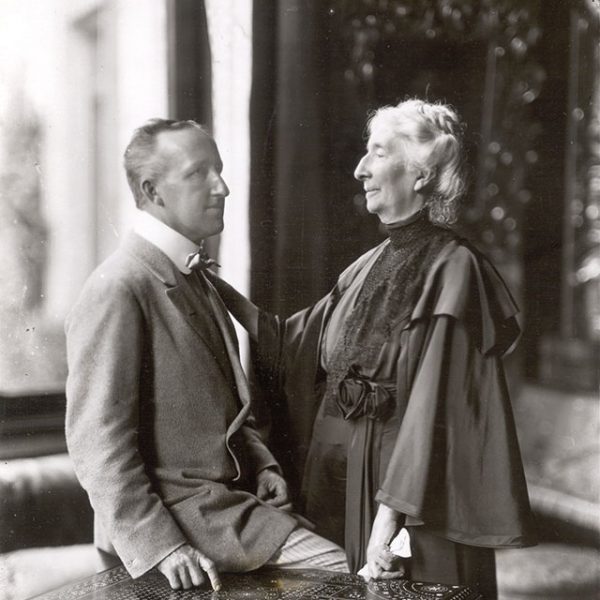
Siegfried Wagner left behind an operatic oeuvre quantitatively comparable to that of his father. In the number of illustrations, the son beats his father by a wide margin; in fact, with perhaps the exception of grandfather Franz Liszt, there is no member of the Wagner family, not even Richard Wagner himself, who has left behind so many illustrative references. And yet, Siegfried Wagner’s manifestation remains blurred, elusive, contradictory, often a mere façade. In numerous texts – primarily those associated with Bayreuth – he is later even stylized like his father in hagiographic terms as a “master”.
Hardly any autobiographical statements or explanations of his works exist. Theoretical and ideological observations on art, such as those produced in large quantities by his father, are rarely found in Siegfried Wagner’s oeuvre. Important parts of his private estate are still kept locked away and are not accessible for research purposes.
Siegfried Wagner’s life is almost only tangible and documented in his work and in the productions of his father’s works. Siegfried Wagner’s own works for the stage, on the other hand, have largely been forgotten. He did, however, write poems, and composed 17 fairy-tale and folk operas, a large number of which were premièred during his lifetime. However, with the exception of his first opera, “Der Bärenhäuter” (“The Bearskin Man”), they met with little audience interest and quickly disappeared from the repertoire.
Siegfried Wagner’s accomplishments concerning the Festival are nonetheless undisputed: the financial consolidation in economically trying times, the technical modernization and – last but not least – especially in cooperation with the stage designer Kurt Söhnlein from 1925, the careful scenic rehabilitation of his father’s works , which under the direction of his mother Cosima, had been reduced to an anachronistic cult. However, these achievements are often overshadowed by the ideological demands and politicization of the Festival, in which Siegfried Wagner played no small part. After their resumption in 1924, following a ten-year interruption due to the war, the works increasingly became an instrument of national and ultimately National Socialist propaganda.
In 1930, the year of Siegfried Wagner’s death, Robert Musil’s “Man without Qualities”, Ulrich, took a “vacation from life” to embark on a search for the content and purpose of his existence. There were other surprising parallels between Musil’s novel and Siegfried Wagner’s life and personality, not least in the search for a “different state”, in a sexual context. And just as the narrative of Ulrich’s quest for meaning dissipates into countless threads and remains unfinished, Siegfried Wagner’s biography also remains fragmented to this day.
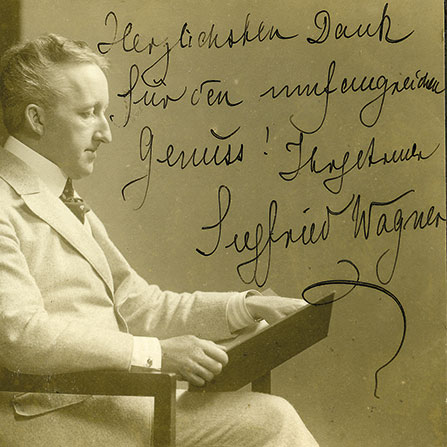
18th July to 4th November, 2018
Theatrum Mundi. Baroque World Theatre, Stage Festival, Spectacle
“All the world’s a stage” – this much-quoted saying by William Shakespeare, had a particularly significance in the Baroque era: the notion that earthly life was nothing but an illusory appearance staged by the gods, in which each human being must play the role allotted to him was fundamental to the European world view in the 17th and 18th centuries. At royal courtly banquets and in the rapidly-spreading multimedia spectacle of opera as a universal work of art, the then ruling classes, self-proclaimed representatives of God on earth, staged and reflected this world to glorify Him and to keep hold of the reins of power.
In the bourgeois era of the 19th century, the idea of the “Theatrum Mundi” (World Theatre) is probably nowhere more emphatically realized, although under completely different circumstances, than in Richard Wagner’s Gesamtkunstwerk or universal work of art: the Bayreuth Festival. Especially the “Ring of the Nibelung” reflects an outdated traditional order of aristocracy, a corrupt world of finance and decadent politics, which it was Wagner’s aim to overcome in order to replace it with an “aesthetic world order”.
A hundred years later, at the beginning of the student unrest of May 1968, French author Guy Debord states that people live in a “society of spectacle”, an illusory world of consumerism in which the ‘economy’ determines roles for the sole purpose of its perpetual self-preservation – an observation that even in the age of social media has lost none of its validity and resonance.
In cooperation with the Hof University of Applied Sciences Münchberg Campus, Iwalewahaus Bayreuth and BayFinK, the Richard Wagner Museum Bayreuth is using the reopening of the UNESCO World Cultural Heritage Margravial Opera House as an opportunity to trace the concept of world theatre in this year’s summer exhibition.
Using contemporary multimedia methods, the exhibition looks at the questions of staging and content, appearance and being, role and self-determination as a common feature of Baroque opera, Wagner’s Gesamtkunstwerk or universal work of art, and today’s virtual realities of the Internet.
30th March to 27th May, 2018
„Ich lasse mich nicht zermahlen!!!“(“I will not be crushed!!!“) – Friedelind Wagner and Bayreuth
An intervention in Siegfried Wagner House
Friedelind Wagner (1918-1991), the eldest daughter of Richard Wagner’s son Siegfried and his wife Winifred, was one of the most prominent proponents of the opposition to the Festival as “Hitler’s Court Theatre ” and the enthusiastic support shown him at Wahnfried. She proved that as a “Wagner” one did not have to be a National Socialist. She would have turned 100 on 29th March, 2018.
“I will not be crushed!”, wrote Friedelind Wagner on 6th November, 1939 in a letter to her aunt Daniela Thode. Friedelind Wagner was thus a significant counterpoint to the spirit that manifested itself as an example in Siegfried Wagner House. From her youth onwards she was regarded as the “black sheep” of the family and after the outbreak of World War II in 1939, she went into exile in America at the age of only 21.
It is difficult, however, to judge whether the final break with Wahnfried arose primarily from her political convictions or to a greater extent from her famously constant opposition to her mother and her role as outsider in the family. In any case, Friedelind Wagner, now an American citizen, was berated as a “traitor” after her return to Bayreuth in 1953.
From March 30th to May 27th, 2018, the Richard Wagner Museum showed an intervention on Friedelind Wagner as part of its permanent exhibition at Siegfried Wagner House under the title “‘Ich lasse mich nicht Zermahlen!!!‛- Friedelind Wagner and Bayreuth”.
Siegfried Wagner House symbolises in a very significant way the National Socialists’ use of Wagner and the Bayreuth Festival. From 1936 to 1940, Winifred Wagner hosted Adolf Hitler here during his visits to the Festival. She herself lived there until her death in 1980. This highly contaminated place from a historical point of view is today the setting for the documentation and presentation of Wagner’s ideological history, the Bayreuth Festival and the Wahnfried family before and during the Third Reich.
We thank our patron Mr. Manfred Meklenburg for his generous support.
5th March to 27th May, 2018
Das Verdächtige Saxophon. “Entartete Musik” im NS-Staat (The Ominous Saxophone. “Depraved Music” in the Third Reich
An annotated reconstruction of the 1938 Dusseldorf exhibition
After the National Socialist book burnings in 1933 and the expulsion and imprisonment of artists critical of the regime, the Munich exhibition “Degenerate Art” followed in 1937. In music, too, the modern aesthetics and stylistic tendencies were branded as “degeneration” and “corruption”. In May 1938 an exhibition entitled “Degenerate Music” was held at the “Reichsmusiktagen” (Reich Music Days) in Dusseldorf.
Like the Munich show, it pilloried anything considered “un-German ” and discriminated against Jewish operetta and popular music composers, atonal works and jazz, describing them as “alien”.
Fifty years after the opening of the exhibition “Degenerate Art”, in 1988, Peter Girth (Dusseldorf Symphony Orchestra) and Albrecht Duemling (Berlin) commemorated the discriminatory National Socialist ideological regimentation and enslavement of the German music scene in an annotated reconstruction of the original Nazi show. Commissioned by the Berlin Philharmonic Foundation (Stiftung Berliner Philharmoniker) and the Tonhalle Düsseldorf concert hall, a new edition entitled “Das verdächtige Saxophon. ‚Entartete Musik’ im NS-Staat” (“The Ominous Saxophone. ‘Degenerate Music’ in the Third Reich”) was released in 2007.
The poster for the exhibition shows the original motif of Hans Severus Ziegler’s catalogue accompanying the 1938 exhibition: a black jazz musician, the main character of Ernst Krenek’s opera “Jonny spielt auf” (“Jonny Plays”), was depicted as symbolic of this “degeneration”, emphasized by the yellow badge in form of a Star of David in his buttonhole.
From 15th March, 2018, the Richard Wagner Museum Bayreuth will be showing the travelling exhibition. In Bayreuth, it will be expanded by exhibits documenting the political enslavement of Wagner’s legacy.
14 th July to 29 th November, 2017
»Es gibt nichts ‚Ewiges‘.« (“Nothing is eternal“)
Wieland Wagner – Tradition and Revolution. An anniversary exhibition on the occasion of the 100th birthday.
Wieland Wagner (1917-1966) was one of the 20th century’s greatest reformers of the operatic stage. Growing up in the sheltered isolation of Wahnfried, the mythical home of his grandfather Richard Wagner in Bayreuth, surrounded by German nationalistic, anti-Semitic Wagner ideology and the artistic Bohemian atmosphere of the Festival, the first-born son of Wagner’s son Siegfried and his wife Winifred became a favourite of Adolf Hitler.
After his first attempts at stage design at the Bayreuth Festival between 1937 and 1945, the end of World War II and the Third Reich, with the discovery of the crimes of the regime to which his family and, above all, his mother were so closely connected, represented a deep and distressing disruption of the ostensibly perfect world of the designated Bayreuth Crown Prince.
At the family’s retreat in Nußdorf on Lake Constance, the artist Wieland Wagner was reborn – almost unnoticed – out of the spirit of aesthetic modernism, antiquity and psychoanalysis, namely C.G. Jung’s theory of archetypes – intellectual territory that had previously been forbidden and frowned upon.
At the age of just 30, Wieland Wagner, together with his brother Wolfgang, took over the direction of the Bayreuth Festival, completely discredited as Hitler’s court theatre, but which was resurrected as soon as 1951, just six years after the end of the war. Here, with the theatrical aesthetic revolution of “Neu-Bayreuth”, he created a Wagnerian iconography that for decades became as mandatory as the naturalistic historical staging of Richard Wagner himself. In this way, he ensured that the Bayreuth Festival turned its back on its ideologically-burdened ‘tradition’, steering it towards a style reminiscent of statue-like, antiqued reliefs of archetypally-interpreted figures, their inner life and psyche reflected outwards using abstract forms, colours and light in archaic, symbolic spaces, thereby realizing the dramatic plot – entirely in the spirit of Richard Wagner – as an expression of the myth. In doing so, he liberated the Festival from its political disrepute, leading to a contemporary yet equally forward-looking Wagner renaissance.
The exhibition marking the anniversary of Wieland Wagner’s 100th birthday traces Wieland Wagner the man and the stage artist, conveying an impression of the legendary epoch of the Bayreuth Festival and with it the art of musical theatre and of a radically altered image of Wagner worldwide. This epoch was relatively brief, lasting a mere 15 years until Wieland Wagner’s premature death at the age of only 49, and yet it continues to have an impact to the present day. The exhibition’s scenographic format also allows the essential aspects of theatre and cultural history of Wieland Wagner’s theatre to be experienced in a sensual way.
The exhibition was made possible and sponsored by the Commissioner for Culture and Media and the Oberfrankenstiftung (Upper Franconian Foundation).
17th July to 20th November, 2016
WAGNER PICTURES. MONIKA RITTERSHAUS.
Photographs 1992-2016
The Richard Wagner Museum already focused on a chapter of Wagner iconography and its reception in its special exhibition “Germanenkult – Wagner-Illustrationen von Ferdinand Leeke” (Germanic cult – Wagner illustrations by Ferdinand Leeke) (15.03.-29.05.2016). As a follow up, the 2016 Summer Exhibition, featuring the theatre photography of Monika Rittershaus, presents the diverse reception of Wagner over the previous 20 years, thereby also illustrating the discussion around a Wagner image that was shaped to no little extent by Leeke’s works at the beginning of the last century.
Theatre photography is a special discipline of the art of photography. As a performative, dynamic art form, theatre evades the fixed moment in time frozen, or as it were, solidified by a photograph. So it is important not only to capture the artistic intention of an operatic production and its authors in the recorded moment, but also its specific internal and external rhythm. Successful theatre photography is therefore not only documentation, but also always an interpretation and representation of theatre aesthetics.
Monika Rittershaus achieves this in her photographs in a fascinating way. Almost symbolically, her photographs condense the spirit of an operatic performance as if under a magnifying glass. The interdependence of character and space takes on special significance. Monika Rittershaus is also seen in her documentation – both individual yet typical – of the dramatis personae and their characters. The theatre as an evanescent art form about people is shown in Monika Rittershaus’s images not as a documentation of the transient history of historical performances, but rather in all its exciting presence and vitality.
The 2016 exhibition at the Richard Wagner Museum is a retrospective of the works of Monika Rittershaus on Wagner productions. Her many years of collaboration with important and diverse directors and stage designers have resulted in a fascinating and artistically high-quality panorama of various Wagner interpretations in the diverse expressive forms of modern theatre aesthetics. The exhibition therefore not only widens the view on Wagner and shows his work from the broadest perspectives, but in the photographs of Monika Rittershaus, tells us about the art and fascination of the theatre and the staging of Wagner through fascinating works of art in their own right .
The exhibition catalogue is available in the museum shop for € 6.50!
The artist Monika Rittershaus, born in 1963, is one of the most important, sought-after and successful theatre photographers of our time. From 1982 – 1984 she studied philosophy, art history and German language and literature at the University of Wuppertal, from 1985 – 1992 photography at the University of Applied Sciences Dortmund with Prof. Gisela Scheidler. Since 1989 she has worked as a theatre photographer for the Staatsoper Berlin, Komische Oper Berlin, Berliner Ensemble, Oper Frankfurt, Nederlandse Opera, Hamburgische Staatsoper, Salzburger und Schwetzinger Festspiele, Los Angeles Opera and others. She has worked primarily with Achim Freyer, Claus Guth, Christof Loy, Claus Peymann, Andreas Homoki, Barrie Kosky, Hans Neuenfels, Calixto Bieito, Peter Konwitschny, Johan Simons among others.
The documentation and interpretation of international Wagner productions naturally plays an important role in her work. Since 2006 she has also been working intensively for “Zukunft@BPhil”, the Berliner Philharmonic Orchestra’s education project. Exhibitions of her works have already taken place in Berlin, Dresden, Frankfurt, Guetersloh, Los Angeles, Salzburg and Schwetzingen.
She has published the following highly acclaimed books and catalogues:
1995 Klangbilder, Portrait of the Staatskapelle Berlin
1999 Achim Freyer WORLD OF WAY FLUTES
2006 Malakhov’s Sleeping Beauty
2007 FREYER THEATER
2008 Schwetzinger Festival 1996-2008
2009 The Jerusalem Chamber Music Festival
Further information is available at: www.monikarittershaus.de
25th March to 29th May, 2016
Germanenkult – Wagner-Illustrationen von Ferdinand Leeke
(Germanic cult – Wagner Illustrations by Ferdinand Leeke)
Friedrich Nietzsche was shocked by what he experienced at the first Bayreuth Festival in 1876: “Wagner has been translated into German! […] German art! The German master! German beer!”
Cosima Wagner, her future son-in-law Houston Stewart Chamberlain and the “Bayreuth Circle” around her had firmly anchored Richard Wagner’s legacy and image in the anti-modernism of the German Empire. They not only placed it unconditionally at the service of the emerging people’s nationalism – but at its pinnacle.
The image of a “Germanic” Wagner in the gouaches of painter Ferdinand August Leeke (1859 – 1937), which Siegfried Wagner commissioned from the artist at the end of the 19th century in memory of his father, was widely disseminated and thus strongly anchored. The gouaches served as templates for elaborate portfolios and countless postcards.
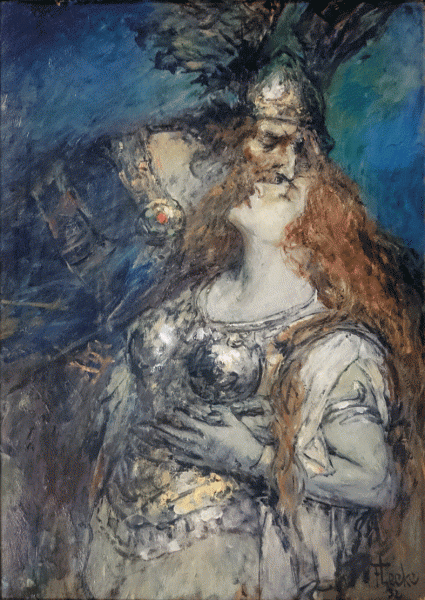
Leeke, a graduate of the Royal Academy of Arts in Munich, worked as a painter and illustrator in the state capital and, besides his genre paintings and portraits, mainly created depictions of Germanic mythology. His illustrations of Wagner’s musical dramas are not only a mirror of the realistic and emotional performance style of the era, but also reflect the political zeitgeist, which placed “German art” and the “German spirit” above everything else, misinterpreting them as an expression of “German way ” which, according to a poem by Emanuel Geibel, “the world might adopt”.
In 2016, the Richard Wagner Museum looks at Wagner’s image then and now in two very different exhibitions. After the Ferdinand Leeke illustrations, which represent the obligatory Wagner iconography as it was maintained well into the 20th century, the 2016 summer exhibition presents the theatre photographs of Monika Rittershaus. These show the diverse and multi-layered modern and post-modern reception of Wagner over the past 20 years on opera stages around the world, illustrating the discussion around a Wagner image that was shaped not least by Leeke’s works at the beginning of the last century.
27th July, 2015 to 31st January, 2016
„Wahnfried“ oder „Aergersheim“ (“Crazy-Tranquil or Home of Trouble”)
The history of Wahnfried
Richard Wagner spent his life travelling around Europe and was almost 60 years old when he planned his own artist’s villa in Bayreuth in 1872 and – with money from King Ludwig II and Cosima – built the house he called “Wahnfried”. Because of the many delays in construction, Wagner meanwhile also started to talk about his “Aergersheim” or “Home of Trouble”. The exhibition around the history of “Wahnfried”, conceived by the Swiss ARTES office, under the direction of Dr. Verena Naegele, shows the history of the origins and transformation of this unique composer’s villa from a residential building with annexes to its transformation into a museum.
In 1893 Wagner’s son Siegfried built the Siegfried Wagner House on the same site, which his wife, Winifred, extended several times from 1932 onwards. Adolf Hitler also stayed here as a guest. After the destruction of Wahnfried by a bomb in 1945, the house was made habitable again in 1949, following plans by Hans Reissinger. Until the death of Wagner’s grandson Wieland in 1966, it served as a residence for his family. After its reconstruction, the exterior of which remained true to the original, it has been run as a museum since 1976.
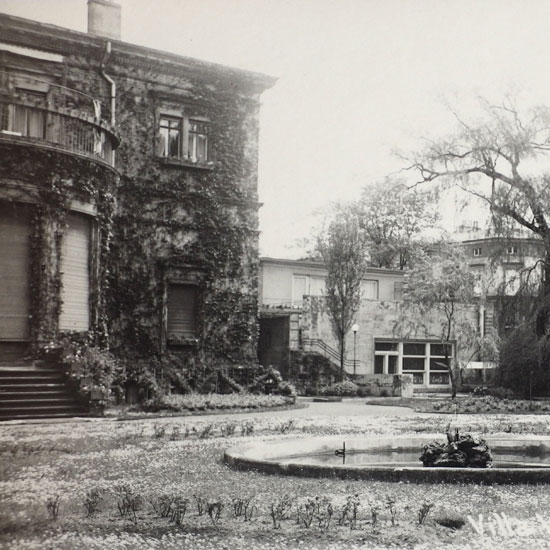
The exhibition is not only about the eventful history of Wahnfried house up to the present day, but also about insights into the private life of the Wagner family. On display are, among other things, the piano on which Wagner originally composed his works, as well as many previously unknown pictures, plans and documents, which reveal new insights into the construction history of Wahnfried House. The graphic design of most of the exhibition is by Atelier Pixelberg, Zurich.
The exhibition was made possible and supported by the Federal Government Commissioner for Culture and the Media and the Upper Franconian Foundation.

